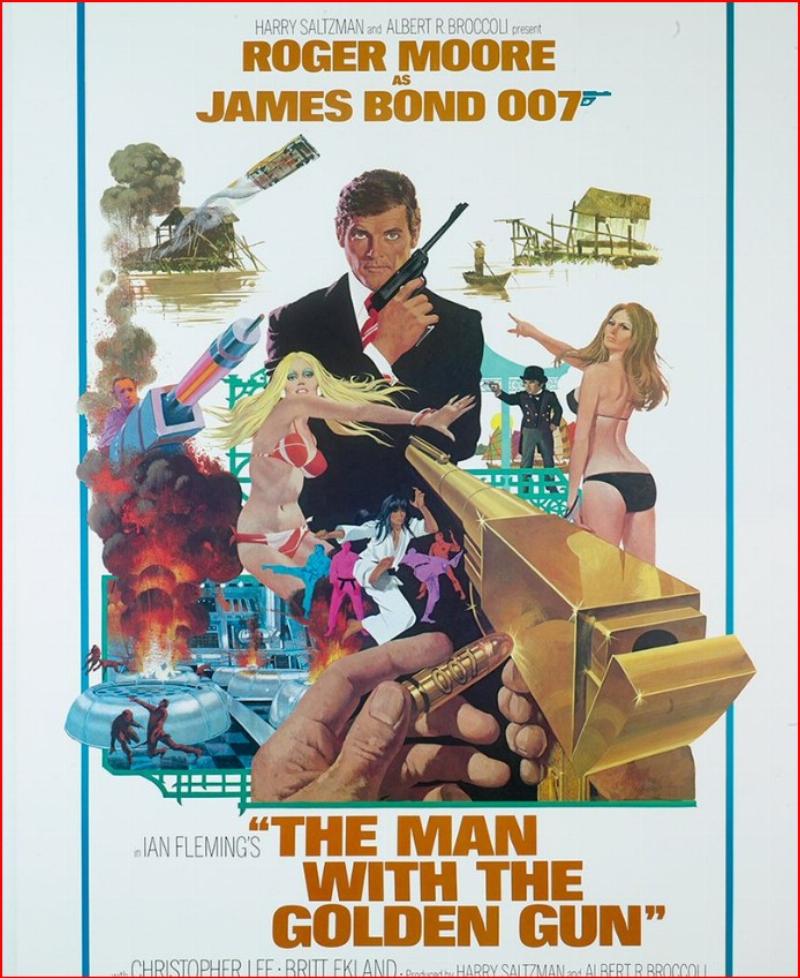


The movie posters of James Bond pictures usually featured an armed 007, surrounded by a montage of exotic locations, villains, lairs, action scenes, gadgets, and the alluring heroines.
There were also the minimalist posters that only featured the film's leading actor, in a dinner jacket, posing with his Walther PPK.
Occasionally, even the villains participated in posing for similar stills.
All these posters conveyed a message that Bond is a steadfast proponent and protector of the West. He was also an aspirational figure -- a fearless patriot who enjoyed the luxuries that men dream of.
The posters were in synch with the minimalist, mysterious, and compelling gun-barrel sequence that began most of the pictures.
For every mission, Bond usually had the three Gs, namely guns, gadgets, and girls.
But things are changing now.
Bond has had to part ways with one of the Gs, i.e., his gun, albeit only in the posters for Amazon's streaming service, Prime Video. This was noticed by the James Bond fan site The Spy Command.
Amazon recently acquired the James Bond franchise from former producers Barbara Broccoli and Michael G. Wilson.
The disarming change has been retrofitted into the old posters.
Consequently, Sir Roger Moore, Sir Sean Connery, George Lazenby, Timothy Dalton, Pierce Brosnan, and Daniel Craig end up with odd poses, the gun disappears, and instead, an AI-generated hand remains clasped.
The worst among these is the new poster for the first Bond picture, Dr. No.
The original poster had Sir Sean with his arms crossed and holding a gun. Now the arms remain crossed, but there's a closed but not clenched fist instead of a gun
This makes Sir Sean's Bond look guarded and peculiar rather than his usual assertive and confident. It is amazing how one element of change the narrative of a still image. This could be deemed as blasphemous for fans of the classic era of 007.
ScreenRant even ranked these gunless posters in order of their awfulness.
The signature 007 logo still features the gun, but don't be too surprised, if it also disappears in time.
Clearly, those who altered these pictures have no respect for the 007 franchise or even cinema history.
If Amazon Prime didn't want to feature the gun in their new posters, they could have found an existing image of Bond without a gun or opted for close-ups of the Bond actors.
The following is an example
Instead, they altered and ruined existing images with this hamfisted effort.
It's not only the celluloid Bond who has been targeted.
Recently, the literary Bond also suffered.
A "sensitivity" review was conducted to find if Ian Fleming's James Bond novels met the current standards of political correctness.
Following these reviews, changes have been made to the novels. In the sensitivity reader–approved versions, the n-word has mostly been replaced by "black person" or "black man"; also, racial descriptors that were deemed offensive were eliminated in some instances.
The publishers probably think that it will increase their readership. But a little common sense would have informed them that those who are easily offended will not bother to read the Bond books in the first place.
This was an insult to the author and to readers; it was also an insult to literature, which is supposed to reflect the time during which it was conceived.
Back to the gunless 007 posters.
There will be some who say, "It's just the silly thumbnail posters that appear on Amazon's streaming site, the movies aren't being censored. Get over it."
But this is how the journey into darkness usually begins: they make small changes that may seem insignificant, and in time, the censorship becomes severe.
Perhaps the titles will be altered for being offensive or violent
A View to A Kill or Licence to Kill or Live and Let Die, or The Man with the Golden Gun, could be altered; perhaps Octopussy will also be subjected to similar changes.
Perhaps the contents within the films will be altered to be less 'offensive'.
A film critic once told me that the aim behind phasing out physical media, such as VHS or Blu-ray disks, and promoting digital services, such as streaming, was to retain control over the content. I thought the claim was a preposterous, baseless paranoia, but now it doesn't seem entirely unlikely.
The powers that be can alter the content, and you can do very little about it.
The powers that be can remove content that they deem offensive. Consequently, that particular film won't be available anywhere.
One may buy a film online and own it for a prolonged period, but changes can be made via the backend, and there's nothing the digital owner can do about it.
Once you suppress or alter literature or films of the past, you have suppressed history and culture; this makes it easy to control the minds of the people.
This is the nightmare that Orwell predicted.
Back to Bond.
It makes sense for fans to acquire Blu-rays of the pictures before Amazon butchers them.
In fact, acquiring physical media may be a good idea for all the old classics, before the PC butchers strike with extreme prejudice.
The auteurs also support this idea.
Image: Screen shot from shared image on James Bond official account on X // fair use
